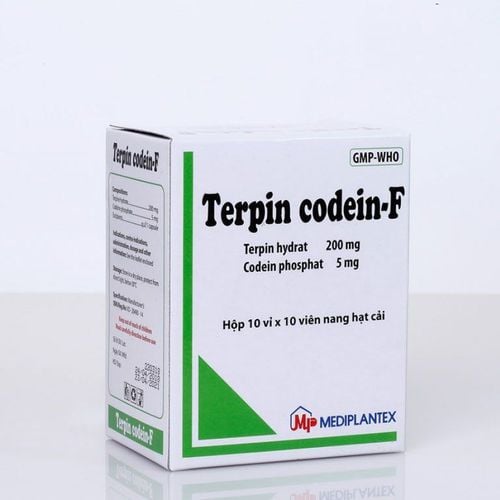This is an automatically translated article.
The article was written by Dr., Doctor Truong Ngoc Hai, Department of Emergency Resuscitation, Vinmec Central Park International General Hospital
High-flow oxygen therapy through a nasal cannula is applied in cases of acute hypoxic respiratory failure, postoperative respiratory failure, acute pulmonary edema, acute heart failure, sleep apnea. ... gives good effect. However, this therapy also has many limitations.
Matters of note
Like other medical interventions, nasal cannula high-flow oxygen therapy also has many limitations and drawbacks. One of the major disadvantages is that it is more expensive to care for than low-flow nasogastric tubes, is more complicated, and requires training to administer therapy, care, reduced mobility, risk of leakage, airway and loss of positive airway pressure effect, the possibility of delaying intubation, and the potential for inappropriately delaying end-of-life decisions (Spoletini et al. 2015). Furthermore, potential risk factors for delayed deployment of noninvasive ventilation in the application of high-flow oxygen therapy via nasal cannula. Includes patients with altered consciousness, facial trauma, hypersecretion with risk of aspiration pneumonia, and hemodynamic instability. [1] [8]
Clinically applied
High-flow oxygen therapy through a nasal cannula is used in the following cases:
Acute hypoxic respiratory failure Post-operative respiratory failure Acute heart failure / Acute pulmonary edema Hypercapnia respiratory failure, COPD Hyperoxidation before and after extubation Sleep apnea Use in emergency department For patients who require no intubation.

Liệu pháp oxy lưu lượng cao qua ống thông mũi được áp dụng cho bệnh nhân mắc suy tim cấp tính
Acute hypoxic respiratory failure (AHRF) occurs due to intrapulmonary shunts as a result of atelectasis or alveolar edema. These cases are often poorly responsive to conventional supplemental oxygen therapy. Occurs when there is an increase in alveolar-capillary hydrostatic pressure, increased alveolar capillary permeability, and overflow of blood in the alveoli due to hemorrhage and/or fluid from inflammation (pneumonia). As discussed, nasogastric high-flow oxygen therapy induces PEEP. The FLORALI trial [9] found that although intranasal high-flow oxygen therapy did not reduce intubation rates in non-immunocompromised patients with respiratory failure without hypercapnia, but patients treated with nasogastric high-flow oxygen therapy had reduced ICU mortality and 90 days of treatment. The study results also showed an increase in ventilator-free days, comfort level, decrease in dyspnea and decrease in respiratory rate. No significant adverse effects associated with nasogastric high-flow oxygen therapy were noted. This study had an insufficient number of patients to answer the primary outcome of intubation rates; Two subsequent randomized controlled trials (Stephen et al. and Maggiore et al.) showed that nasal cannula high-flow oxygen therapy was as effective as noninvasive ventilation (NIV). in avoiding intubation and reducing mortality.

Liệu pháp oxy lưu lượng cao qua ống thông mũi có hiệu quả ngang với thông khí không xâm lấn (NIV) trong việc tránh đặt nội khí quản
Physiologically, the ability to independently control FIO2 and oxygen flow during noninvasive ventilation (NIV) and nasal cannula high-flow oxygen therapy offers a clear advantage over conventional oxygen therapy In patients with acute respiratory failure, there is a predisposition to hypercapnia. Nasal high-flow oxygen therapy certainly offers a more comfortable alternative in patients who have difficulty tolerating the NIV modality. Finally, it is important to note the limitations of NIV to the patient and the manpower requirements in nursing care and noninvasive ventilation monitoring (NIV) compared with Nasal Catheter High Flow Oxygen Therapy.
Increasing blood oxygenation for the patient before intubation is very necessary. Nasal high-flow oxygen therapy can be performed in an awake patient, through increased oxygen flow, high FiO2 increases blood PO2. This allows more time for intubation before hypoxia occurs. Historically, a non-rebreathing mask (NRM) has been used to help increase blood oxygenation in patients like these. However, Miguel-Mantanes et al. (2015) found that nasal cannula high-flow oxygen therapy significantly improved oxygenation during intubation compared with nonrebreathing mask breathing (NRM). In a retrospective analysis, noninvasive ventilation such as BiPAP yielded similar outcomes to HFNC in relation to prognostic outcomes, but significantly reduced patient compliance (Besnier, Emmanuel et al. 2016 ). This suggests that nasogastric high-flow oxygen therapy is superior to both NRM and NIV in the pre-intubation period.

Liệu pháp oxy lưu lượng cao qua ống thông mũi đạt hiệu quả cao hơn các liệu pháp thở mặt nạ không thở lại
Oxygen is also important after extubation. Arman et al. (2017) found that although there was no significant difference in post-extubation oxygen saturation between low-flow nasal cannula oxygen therapy and high-flow nasal cannula oxygen therapy in ICU patients, but there were differences in heart rate and respiratory rate, suggesting that in order for the low-flow nasal oxygen patient to reach oxygen saturation, the patient needs to donate heart rate and respiratory rate. Postoperative extubation also requires oxygen therapy. Youfeng et al. (2018) completed a meta-analysis concluding that nasogastric high-flow oxygen therapy can reduce the need for respiratory support compared with nasogastric low-flow oxygen therapy in heart surgery patient. Hernandez et al published 2 articles in the journal JAMA on the application of nasogastric high-flow oxygen therapy in high-risk patients after extubation compared with low-risk and receiving found that high-flow nasogastric oxygen therapy was superior to standard care in low-risk patients after extubation and not worse than non-invasive mechanical ventilation in high-risk patients after intubation. endotracheal extubation. [10] [11] Furthermore, in high-risk patients, the combination of noninvasive mechanical ventilation with high-flow nasal cannula oxygen therapy is superior to all other modalities [12]
You should choose reputable medical facilities, a team of highly qualified doctors and modern equipment to achieve the best treatment results. Vinmec International General Hospital is a high-quality medical facility in Vietnam with a team of highly qualified medical professionals, well-trained, domestic and foreign, and experienced.
A system of modern and advanced medical equipment, possessing many of the best machines in the world, helping to detect many difficult and dangerous diseases in a short time, supporting the diagnosis and treatment of doctors the most effective. The hospital space is designed according to 5-star hotel standards, giving patients comfort, friendliness and peace of mind.
Please dial HOTLINE for more information or register for an appointment HERE. Download MyVinmec app to make appointments faster and to manage your bookings easily.
References
[1]
Segovia B,Velasco D,Jaureguizar Oriol A,Díaz Lobato S, Combination Therapy in Patients with Acute Respiratory Failure: High-Flow Nasal Cannula and Non-Invasive Mechanical Ventilation. Archivos de bronconeumologia. 2018 Jul 12 [PubMed PMID: 30017253]
[2]
de Jong A,Calvet L,Lemiale V,Demoule A,Mokart D,Darmon M,Jaber S,Azoulay E, The challenge of avoiding intubation in immunocompromised patients with acute respiratory failure. Expert review of respiratory medicine. 2018 Aug 12 [PubMed PMID: 30101630]
[3]
Mündel T,Feng S,Tatkov S,Schneider H, Mechanisms of nasal high flow on ventilation during wakefulness and sleep. Journal of applied physiology (Bethesda, Md. : 1985). 2013 Apr; [PubMed PMID: 23412897]
[4]
Parke RL,McGuinness SP, Pressures delivered by nasal high flow oxygen during all phases of the respiratory cycle. Respiratory care. 2013 Oct; [PubMed PMID: 23513246]
[5]
Parke RL,Bloch A,McGuinness SP, Effect of Very-High-Flow Nasal Therapy on Airway Pressure and End-Expiratory Lung Impedance in Healthy Volunteers. Respiratory care. 2015 Oct; [PubMed PMID: 26329355]
[6]
Esquinas AM,Karim HMR,Soo Hoo GW, Insight to the growing utilizations of high flow nasal oxygen therapy over non-invasive ventilation in community teaching hospital: alternative or complementary? Hospital practice (1995). 2018 Aug 9 [PubMed PMID: 30092679]
[7]
Di Mussi R,Spadaro S,Stripoli T,Volta CA,Trerotoli P,Pierucci P,Staffieri F,Bruno F,Camporota L,Grasso S, High-flow nasal cannula oxygen therapy talking postextubation neuroventilatory drive and work of breathing in patients with chronic obstructive pulmonary disease. Critical care (London, England). 2018 Aug 2 [PubMed PMID: 30071876]
[8]
Piastra M,Morena TC,Antonelli M,Conti G, Uncommon barotrauma while on high-flow nasal cannula. Intensive care medicine. 2018 Jun 30 [PubMed PMID: 29961104]
[9]
Frat JP,Thille AW,Mercat A,Girault C,Ragot S,Perbet S,Prat G,Boulain T,Morawiec E,Cottereau A,Devaquet J,Nseir S, Razazi K,Mira JP,Argaud L,Chakarian JC,Ricard JD,Wittebole X,Chevalier S,Herbland A,Fartoukh M,Constantin JM,Tonnelier JM,Pierrot M,Mathonnet A,Béduneau G,Deletage-Métreau C,Richard JC, Brochard L,Robert R, High-flow oxygen through nasal cannula in acute hypoxemic respiratory failure. The New England journal of medicine. 2015 Jun 4 [PubMed PMID: 25981908]
[10]
Hernández G,Vaquero C,Colinas L,Cuena R,González P,Canabal A,Sanchez S,Rodriguez ML,Villasclaras A,Fernández R, Effect of Postextubation High-Flow Nasal Cannula vs Noninvasive Ventilation on Reintubation and Postextubation Respiratory Failure in High-Risk Patients: A Randomized Clinical Trial. JAMA. 2016 Oct 18; [PubMed PMID: 27706464]
[11]
Hernández G,Vaquero C,González P,Subira C,Frutos-Vivar F,Rialp G,Laborda C,Colinas L,Cuena R,Fernández R, Effect of Postextubation High-Flow Nasal Cannula vs Conventional Oxygen Therapy on Reintubation in Low-Risk Patients: A Randomized Clinical Trial. JAMA. 2016 Apr 5; [PubMed PMID: 26975498]
[12]
Thille AW,Muller G,Gacouin A,Coudroy R,Decavèle M,Sonneville R,Beloncle F,Girault C,Dangers L,Lautrette A,Cabasson S,Rouzé A,Vivier E, Le Meur A,Ricard JD,Razazi K,Barberet G,Lebert C,Ehrmann S,Sabatier C,Bourenne J,Pradel G,Bailly P,Terzi N,Dellamonica J,Lacave G,Danin Pé,Nanadoumgar H,Gibelin A,Zanre L,Deye N,Demoule A,Maamar A,Nay MA,Robert R,Ragot S,Frat JP, Effect of Postextubation High-Flow Nasal Oxygen With Noninvasive Ventilation vs High-Flow Nasal Oxygen Alone on Reintubation Among Patients at High Risk of Extubation Failure: A Randomized Clinical Trial. JAMA. 2019 Oct 2; [PubMed PMID: 31577036]
[13]
Azoulay E,Lemiale V,Mokart D,Nseir S,Argaud L,Pène F,Kontar L,Bruneel F,Klouche K,Barbier F,Reignier J,Berrahil-Meksen L,Louis G,Constantin JM,Mayaux J,Wallet F,Kouatchet A,Peigne V,Théodose I,Perez P,Girault C,Jaber S,Oziel J,Nyunga M,Terzi N,Bouadma L,Lebert C,Lautrette A,Bigé N, Raphalen JH,Papazian L,Darmon M,Chevret S,Demoule A, Effect of High-Flow Nasal Oxygen vs Standard Oxygen on 28-Day Mortality in Immunocompromised Patients With Acute Respiratory Failure: The HIGH Randomized Clinical Trial. JAMA. 2018 Nov 27 [PubMed PMID: 30357270]
[14]
Beng Leong L,Wei Ming N,Wei Feng L, High flow nasal cannula oxygen versus noninvasive ventilation in adult acute respiratory failure: a systematic review of randomized-controlled trials. European journal of emergency medicine : official journal of the European Society for Emergency Medicine. 2018 Jun 19 [PubMed PMID: 29923842]
[15]
Mauri T,Galazzi A,Binda F,Masciopinto L,Corcione N,Carelesso E,Lazzeri M,Spinelli E,Tubiolo D,Volta CA,Adamini I,Pesenti A, Grasselli G, Impact of flow and temperature on patient comfort during respiratory support by high-flow nasal cannula. Critical care (London, England). 2018 May 9 [PubMed PMID: 29743098]
[16]
Lodeserto FJ,Lettich TM,Rezaie SR, High-flow Nasal Cannula: Mechanisms of Action and Adult and Pediatric Indications. Cureus. 2018 Nov 26; [PubMed PMID: 30740281]
[17]
Clayton JA,McKee B,Slain KN,Rotta AT,Shein SL, Outcomes of Children With Bronchiolitis Treated With High-Flow Nasal Cannula or Noninvasive Positive Pressure Ventilation. Pediatric critical care medicine : a journal of the Society of Critical Care Medicine and the World Federation of Pediatric Intensive and Critical Care Societies. 2019 Feb; [PubMed PMID: 30720646]
[18]
Hill NS,Ruthazer R, Predicting Outcomes of High Flow Nasal Cannula for ARDS: An Index that ROX. American journal of respiratory and critical care medicine. 2019 Jan 29; [PubMed PMID: 30694696]
Synopsis from Sharma S, Danckers M, Sanghavi D, et al. High Flow Nasal Cannula. [Updated 2020 Jul 2]. Print: StatPearls [Internet]. Treasure Island (FL): StatPearls Publishing; 2020 Jan-.













